Zinc is a versatile material known for its corrosion resistance, electrical conductivity, and malleability. It is commonly used for a wide range of applications, including manufacturing electrical components, automotive parts, building materials, and more. To produce these products, manufacturers rely on machining techniques to shape and finish zinc to exact specifications.
This involves the removal of material to achieve precise dimensions, shapes, and surface finishes. Zinc is a widely used material for machining due to its favorable properties and versatile applications in various industries.
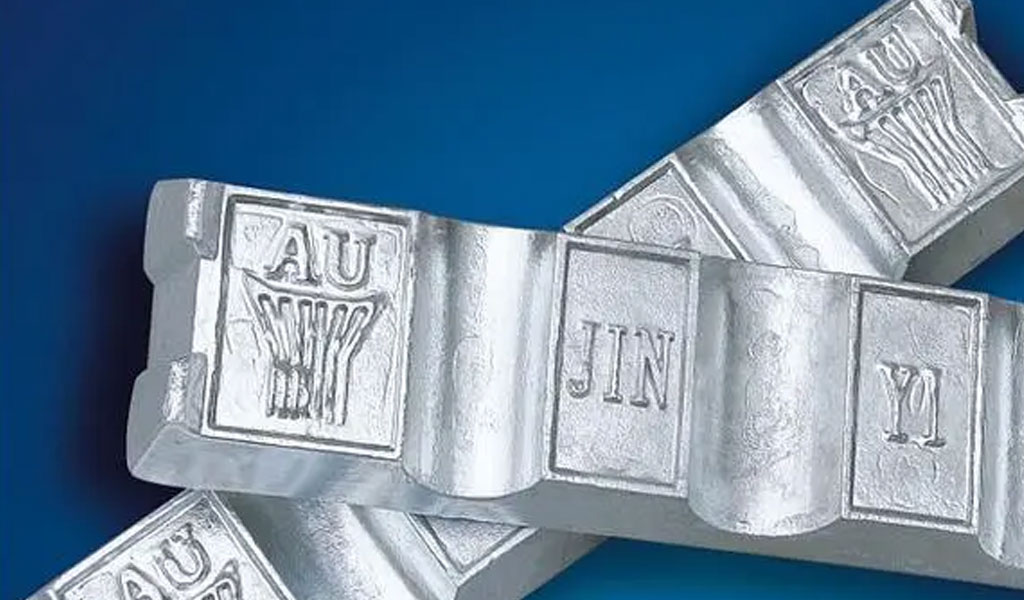
What Is Zinc Machining
Zinc machining refers to the process of shaping or removing material from zinc workpieces to create finished products or components.
This process involves various machining techniques and tools to achieve the desired shape, size, and surface finish of zinc parts. Zinc machining is a crucial aspect of manufacturing, and it is commonly used in various industries, including automotive, electronics, construction, aerospace, and more.
Physical and Chemical Properties of Zinc
Physical Properties:
- Appearance: Zinc is a bluish-white, lustrous metal with a somewhat low melting point.
- Density: Zinc is relatively dense, with a density of around 7.14 grams per cubic centimeter.
- Melting Point: Zinc has a relatively low melting point of approximately 419.5 degrees Celsius (787.1 degrees Fahrenheit).
- Malleability: Zinc is highly malleable, meaning it can be easily shaped, pressed, or rolled into various forms without breaking or cracking.
- Ductility: It is moderately ductile, allowing it to be drawn into thin wires or threads.
- Electrical Conductivity: Zinc is a good conductor of electricity, making it suitable for electrical and electronic applications.
Chemical Properties:
- Corrosion Resistance: Zinc is known for its excellent corrosion resistance, especially when used in galvanized form. It forms a protective zinc oxide layer on its surface, which prevents further oxidation.
- Reactivity: Zinc is chemically reactive and can react with acids to produce hydrogen gas. This property makes it useful in various chemical processes.
- Alloy Formation: Zinc readily forms alloys with other metals, enhancing its mechanical properties and widening its range of applications.
Advantages of Zinc as a Machining Material
- Ease of Machinability: Zinc is relatively easy to machine due to its malleability and low melting point. It can be machined using various conventional techniques.
- Good Surface Finish: Zinc machining can achieve a smooth and consistent surface finish, which is crucial in applications where aesthetics or precision is important.
- Corrosion Resistance: Zinc, particularly when used in galvanized form, offers excellent corrosion resistance. This property is valuable in applications exposed to harsh environmental conditions.
- Electrical Conductivity: Zinc’s good electrical conductivity makes it suitable for electrical and electronic components and connectors.
- Low Cost: Zinc is an abundant and affordable material, making it cost-effective for manufacturing a wide range of products.
- Recyclability: Zinc is highly recyclable, contributing to sustainable and eco-friendly manufacturing practices.
Limitations of Zinc Machining
- Low Strength: Zinc has relatively low mechanical strength compared to other engineering metals like steel or aluminum. This limits its use in high-stress applications.
- Brittleness: In certain conditions, zinc can become brittle, especially at low temperatures. This limits its use in applications where impact resistance is critical.
- Toxicity: Zinc fumes and dust produced during machining can be toxic if inhaled, posing health risks to workers. Adequate ventilation and safety measures are necessary.
- Environmental Concerns: The production of zinc can have environmental impacts, and the disposal of zinc waste should be managed responsibly.
Zinc CNC Machining is a versatile process that leverages the favorable properties of zinc, such as its ease of machinability, corrosion resistance, and electrical conductivity. However, it also has limitations, including its lower mechanical strength and potential environmental concerns. Understanding these properties and their implications is essential when working with zinc in machining applications.
Zinc Alloys in Machining
Popular Zinc Alloys
Zinc alloys are created by combining zinc with other metals to enhance specific properties for various applications. Some of the popular zinc alloys used in machining include:
- Zamak Alloys: These are the most widely used zinc alloys and are known for their exceptional castability. The most common Zamak alloys are Zamak 3, Zamak 5, and Zamak 7. They are used in a wide range of applications, from automotive components to consumer goods.
- Zinc-Aluminum Alloys: Combining zinc with aluminum results in alloys with improved tensile strength and hardness. The ZA alloys, like ZA-8 and ZA-27, are used in applications where strength and durability are crucial, such as automotive parts.
- Zinc-Copper Alloys: Adding copper to zinc enhances the tensile strength and creep resistance. These alloys are used in applications like architectural hardware, where both strength and aesthetics are important.
- Zinc-Nickel Alloys: Zinc-nickel alloys provide excellent corrosion resistance, making them suitable for applications in aggressive environments. They are often used in the aerospace and automotive industries.
- Zinc-Tin Alloys: Zinc-tin alloys offer improved ductility and machinability. They find use in various electronic and electrical components.
- Zinc-Lead Alloys: The addition of lead to zinc improves machinability, making it easier to shape into intricate parts. These alloys are used in the production of parts that require detailed machining.
Advantages and Disadvantages of Alloying
Advantages of Alloying Zinc:
- Enhanced Mechanical Properties: Alloying zinc with other metals can significantly improve its mechanical properties, such as strength, hardness, and ductility, making it more suitable for specific applications.
- Corrosion Resistance: Some zinc alloys, like zinc-nickel, offer enhanced corrosion resistance, extending the lifespan of components used in harsh environments.
- Improved Machinability: Certain alloys, such as zinc-lead, are designed to be more easily machined, allowing for intricate and precise part production.
- Cost-Effective: Using zinc alloys can be cost-effective, as the properties of the alloy can be tailored to meet the specific requirements of a given application.
Disadvantages of Alloying Zinc:
- Complex Composition: The addition of other metals can make alloys more complex and potentially expensive to produce.
- Specific Alloy Selection: Selecting the appropriate alloy can be challenging, as it requires considering the specific requirements of the application, including mechanical properties and environmental conditions.
- Recycling Challenges: Some zinc alloys can be more challenging to recycle due to their complex compositions, potentially leading to increased waste in the recycling process.
Applications of Zinc Alloys in Different Industries
Zinc alloys are widely used in various industries due to their tailored properties. Here are some applications in different sectors:
- Automotive Industry: Zinc alloys, such as Zamak, are commonly used for manufacturing automotive components like door handles, brackets, and connectors due to their excellent castability and cost-effectiveness.
- Electronics and Electrical Components: Zinc-tin and zinc-aluminum alloys are used in electronic enclosures, connectors, and switches due to their electrical conductivity and corrosion resistance.
- Construction and Architecture: Zinc-copper alloys are often used in architectural hardware, including locks and handles, where a balance of strength and aesthetics is required.
- Aerospace: Zinc-nickel alloys are used in aerospace applications to provide corrosion resistance and durability in challenging environments.
- Medical Devices: Zinc alloys are employed in medical equipment and devices due to their biocompatibility and ease of machining for precision components.
- Consumer Goods: Zinc alloys are used in various consumer products, including buckles, zippers, and fashion accessories, owing to their affordability and ease of manufacturing.
Zinc alloys offer a versatile range of properties that can be tailored to meet specific industrial needs. The choice of alloy depends on the desired properties, environmental factors, and cost considerations, making zinc alloys an essential part of modern manufacturing in various sectors.
Types of Zinc Machining Processes
Zinc machining encompasses various processes to shape and form zinc materials into finished components. Each process has its unique characteristics and is selected based on the specific requirements of the project. Here are some common types of zinc machining processes:
1. Turning
Turning involves rotating a workpiece while a cutting tool removes material to create cylindrical or conical shapes. In zinc machining, turning is often used for producing components like shafts, pins, and threaded parts.
2. Milling
Milling utilizes rotating cutters to remove material from the surface of a workpiece. This process is versatile and can be used to create a wide range of shapes, including slots, pockets, and complex contours. Zinc machining via milling is suitable for producing parts with intricate geometries.
3. Drilling
Drilling involves creating holes in a workpiece using a rotating cutting tool. In zinc machining, drilling is commonly employed for producing holes of varying sizes in zinc components, such as those used in fasteners or connectors.
4. Die Casting
Die casting is a specialized process in which molten zinc is injected into a die (mold) cavity to create near-net-shaped zinc die cast parts. It is a high-speed process, ideal for producing intricate, high-precision components, often used in the automotive and electronics industries.
5. Extrusion
Extrusion is a process where zinc is pushed through a die to create long, continuous shapes with a consistent cross-sectional profile. It’s used for producing items like tubing, frames, and structural components.
6. Electrochemical Machining
Electrochemical machining (ECM) uses an electrically conductive tool and an electrolyte to remove material from a workpiece. ECM is suitable for high-precision machining of complex shapes and is often used in the aerospace and medical device industries.
7. Powder Metallurgy
Powder metallurgy involves compacting and sintering zinc powder to create components. This process is suitable for parts with intricate geometries and can be cost-effective for high-volume production.
8. Comparison of Various Machining Processes
To determine the most suitable machining process for a specific application, it’s important to consider various factors:
- Geometry and Complexity: The shape and complexity of the part will influence the choice of machining process. Turning is suitable for cylindrical shapes, milling is versatile for complex geometries, and die casting is ideal for intricate, high-precision components.
- Tolerance and Surface Finish: Different processes offer varying levels of precision and surface finish. Choose the process that meets the desired tolerances and surface quality.
- Material Properties: Consider the mechanical properties of zinc, such as its strength, ductility, and hardness, when selecting a machining process. Some processes may be better suited to work with specific material properties.
- Production Volume: The volume of parts needed can impact the choice of process. High-volume production may benefit from die casting or powder metallurgy, while low-volume, custom components may be better suited for milling or turning.
- Cost and Lead Time: Consider the cost and lead time associated with each process. Die casting and powder metallurgy may require tooling and setup costs, while turning and milling may be more cost-effective for small production runs.
- Environmental Considerations: Some processes, like die casting, may generate more waste or emissions compared to others. Consider environmental and sustainability factors when choosing a machining process.
The choice of zinc machining process depends on the specific requirements of the project, including the part’s geometry, tolerance, material properties, production volume, and cost considerations. Each process offers distinct advantages and limitations, and selecting the right one is crucial for achieving the desired end result.
Machining Tools for Zinc
Efficient and precise zinc machining relies on the use of appropriate cutting tools, machine tools, lubricants, and coolants. Additionally, ensuring the safety of personnel involved in the machining process is paramount. Let’s explore each of these elements:
1. Cutting Tools
Cutting tools are instrumental in the process of removing material from zinc workpieces. Different types of cutting tools are used in zinc machining, including:
- End Mills: These are versatile cutting tools used in milling processes to create a variety of shapes and features.
- Turning Tools: For turning processes, cutting tools such as lathe tools are used to shape cylindrical or conical parts.
- Drills: Drill bits are essential for creating holes in zinc components.
- Inserts: Carbide or high-speed steel inserts are often used for machining zinc due to their durability and heat resistance.
The choice of cutting tool depends on the specific machining operation, the desired finish, and the material properties of the zinc being machined.
2. Machine Tools
Machine tools are the equipment used to hold, rotate, and manipulate the workpiece and cutting tools during the machining process. Common machine tools for zinc machining include:
- Lathes: For turning operations, lathes hold the workpiece and rotate it while the cutting tool removes material.
- Milling Machines: These are used for milling processes and come in various types, including vertical and horizontal mills.
- Drilling Machines: Drilling machines securely hold the workpiece and provide the necessary rotational motion to create holes.
- Die Casting Machines: In die casting, specialized machines are used to inject molten zinc into molds to create components.
The choice of machine tool depends on the machining operation, part geometry, and production volume.
3. Lubricants and Coolants
Lubricants and coolants play a critical role in zinc machining by:
- Reducing Heat Buildup: Lubricants and coolants help dissipate the heat generated during cutting, preventing tool wear and workpiece deformation.
- Minimizing Friction: They reduce the friction between the cutting tool and the workpiece, which enhances cutting tool life and surface finish.
- Chip Evacuation: Lubricants assist in removing chips from the cutting zone, preventing chip buildup and potential damage to the tool or workpiece.
The choice of lubricant or coolant depends on the machining process, material, and machine tool. Water-soluble coolants are commonly used in zinc machining to provide adequate cooling and lubrication.
4. Safety Measures in Zinc Machining
Safety in zinc machining is of utmost importance, as it involves potentially hazardous materials, equipment, and processes. To ensure a safe working environment, consider the following safety measures:
- Personal Protective Equipment (PPE): Machinists and operators should wear appropriate PPE, including safety glasses, hearing protection, gloves, and protective clothing, to safeguard against potential hazards.
- Proper Ventilation: Adequate ventilation systems should be in place to control and remove fumes and dust generated during machining. This is crucial, especially when machining zinc, which can produce toxic fumes.
- Machine Guarding: Machine tools should be equipped with proper guarding to prevent accidental contact with moving parts and cutting tools.
- Training and Education: Ensure that personnel operating machinery are well-trained in safety procedures and are aware of potential hazards.
- Maintenance and Inspection: Regular maintenance and inspection of machinery and tools are necessary to identify and address any safety concerns.
- Emergency Procedures: Establish and communicate emergency procedures in case of accidents or equipment malfunctions.
- Material Handling: Safely store, handle, and dispose of zinc materials to prevent accidents and environmental hazards.
Machining tools for zinc include cutting tools and machine tools used for shaping and removing material. Lubricants and coolants aid in maintaining tool performance and extending tool life. Additionally, adhering to strict safety measures is essential to protect personnel, equipment, and the environment during zinc machining operations.
Machining Parameters and Techniques for Zinc
Efficient zinc machining involves the careful control of various parameters and techniques to achieve the desired results. Key considerations include speed, feed, depth of cut, machining conditions, surface finish, tolerances, and cutting tool selection and geometry.
1. Speed, Feed, and Depth of Cut
- Speed (RPM – Revolutions Per Minute): The rotational speed of the cutting tool, measured in RPM, is a crucial parameter. The appropriate speed depends on the cutting tool, workpiece material, and the desired surface finish. A higher speed can lead to a smoother finish, but excessive speed may result in tool wear or workpiece deformation.
- Feed Rate (IPM – Inches Per Minute): Feed rate determines how quickly the cutting tool advances along the workpiece. It affects material removal rate and tool life. A suitable feed rate ensures efficient material removal without causing excessive tool wear or overheating.
- Depth of Cut (DOC): The depth of cut represents how deeply the cutting tool engages with the workpiece. Controlling the depth of cut influences chip formation, cutting forces, and the surface finish. Adjusting the depth of cut is essential for achieving precise dimensions and minimizing tool wear.
2. Machining Conditions and Parameters
- Cutting Speed (S): The cutting speed refers to the linear velocity of the cutting tool’s edge. It is calculated based on the tool’s diameter and rotational speed (S = π * D * RPM). For zinc machining, selecting the appropriate cutting speed is crucial to maintain tool integrity and minimize heat generation.
- Tool Engagement (Ae): Tool engagement, expressed as the cross-sectional area in contact with the workpiece, affects cutting forces and tool wear. Proper control of tool engagement helps achieve the desired results while minimizing wear and extending tool life.
- Tool Overhang: Minimizing tool overhang, the distance between the tool holder and the cutting edge, enhances stability and reduces vibrations, leading to better surface finish and tool life.
3. Surface Finish and Tolerances
- Surface Finish: Achieving the desired surface finish is crucial in zinc machining, especially for applications where aesthetics or functional requirements are important. Proper selection of cutting parameters and tooling can help achieve a smooth, consistent surface finish.
- Tolerances: Tolerances specify the allowable deviation from the desired dimensions. Tighter tolerances require more precise control of machining parameters, tool selection, and machine tool accuracy.
4. Cutting Tool Selection and Geometry
- Tool Material: The choice of cutting tool material is essential. Carbide, high-speed steel, and coated tools are commonly used in zinc machining. The tool material must be selected based on factors like cutting speed, feed rate, and workpiece material.
- Tool Geometry: The geometry of the cutting tool, including the cutting edge angles and rake angles, influences chip formation, cutting forces, and surface finish. Proper tool geometry is essential for efficient zinc machining.
- Tool Coatings: Coated tools, such as TiN (Titanium Nitride) or TiAlN (Titanium Aluminum Nitride), can extend tool life by reducing friction, heat, and wear. Selecting the appropriate coating depends on the specific machining operation and workpiece material.
- Tool Life: Monitoring and managing tool life is essential to maintain efficiency and quality in zinc machining. Tool life can be affected by factors like wear, chipping, and built-up edge formation.
Controlling machining parameters, techniques, and selecting the right cutting tools and geometries are crucial for achieving precise dimensions, surface finish, and tolerances in zinc machining. These factors also play a significant role in extending tool life and maintaining overall process efficiency.
Applications of Zinc Machining
Zinc machining finds a wide range of applications across various industries due to its favorable properties and versatility. Here are some notable applications of zinc machining:
1. Automotive Industry
Zinc machining plays a crucial role in the automotive industry, contributing to the manufacturing of various components and parts. Some applications include:
- Automotive Connectors: Zinc is used to produce electrical connectors and terminals for wiring harnesses, ensuring reliable electrical connections in vehicles.
- Engine Components: Zinc machining is used for manufacturing engine parts, such as brackets, housings, and pulleys, due to its cost-effectiveness and ease of machining.
- Interior and Exterior Components: Zinc is employed to create various interior and exterior components, including door handles, window regulators, and decorative trim.
- Safety Systems: Zinc is used in the production of safety-related components, such as airbag inflator casings and seatbelt buckles.
2. Electronics and Electrical Components
Zinc machining is prevalent in the electronics and electrical industries, where precision and electrical conductivity are paramount. Applications include:
- Electronic Enclosures: Zinc machining is used to create enclosures for electronic devices, ensuring electromagnetic shielding and protection from environmental factors.
- Connectors: Zinc connectors, particularly those with intricate designs and precise dimensions, are used in electrical systems and connectors for various applications.
- Switches and Contacts: Zinc is employed to manufacture switches and contacts for electronic devices and electrical equipment.
- Battery Components: Zinc machining is involved in producing battery contacts and holders for portable electronic devices.
3. Construction and Architecture
In the construction and architectural industries, zinc machining contributes to the creation of various components and features, including:
- Architectural Hardware: Zinc is used for architectural hardware, such as locks, hinges, and handles, due to its blend of strength and aesthetics.
- Building Fasteners: Zinc-coated fasteners are prevalent in construction, as they offer excellent corrosion resistance and durability.
- Cladding and Roofing: Zinc is used for cladding, roofing, and rainwater systems due to its natural corrosion resistance and appealing appearance.
- Structural Components: Some structural elements, such as brackets, connectors, and support systems, are fabricated using zinc machining.
4. Aerospace
The aerospace industry relies on zinc machining for various applications, given the stringent requirements for precision and quality. Some notable applications include:
- Aircraft Fasteners: Zinc-coated fasteners are used in aircraft assembly, ensuring corrosion resistance and reliability.
- Electrical Components: Precision electrical connectors, contacts, and components in aircraft systems are often made using zinc machining.
- Instrumentation and Avionics: Zinc machining contributes to the production of components for avionics, instruments, and flight control systems.
- Safety Systems: Zinc machining is involved in manufacturing components for safety systems, including emergency oxygen systems and seatbelt mechanisms.
5. Medical Devices
Zinc machining plays a vital role in the production of medical devices, where biocompatibility, precision, and cleanliness are crucial. Applications include:
- Surgical Instruments: Zinc machining is used to create surgical instruments, such as scissors, forceps, and retractors.
- Orthopedic Devices: Components for orthopedic devices like joint implants and prosthetics are produced using zinc machining.
- Dental Equipment: Zinc machining contributes to the manufacturing of dental instruments and devices.
- Diagnostic Instruments: Precision components for diagnostic and imaging equipment in the medical field are often fabricated using zinc machining.
6. Consumer Goods
Zinc machining is used in the production of various consumer goods, including:
- Fashion Accessories: Zinc is employed for creating fashion accessories like buckles, zippers, and buttons.
- Household Hardware: Components of household items, such as locks, knobs, and hinges, are often made using zinc machining.
- Toys and Games: Zinc machining is used in the manufacturing of toys, puzzles, and gaming components.
- Small Appliances: Certain components of small appliances, such as coffee makers and blenders, are produced using zinc machining.
Zinc machining has widespread applications in industries where precision, durability, and corrosion resistance are essential. Its versatility and favorable properties make it an ideal choice for manufacturing a wide range of components and products in sectors such as automotive, electronics, construction, aerospace, medical devices, and consumer goods.The following are examples of our zinc alloy products:
-
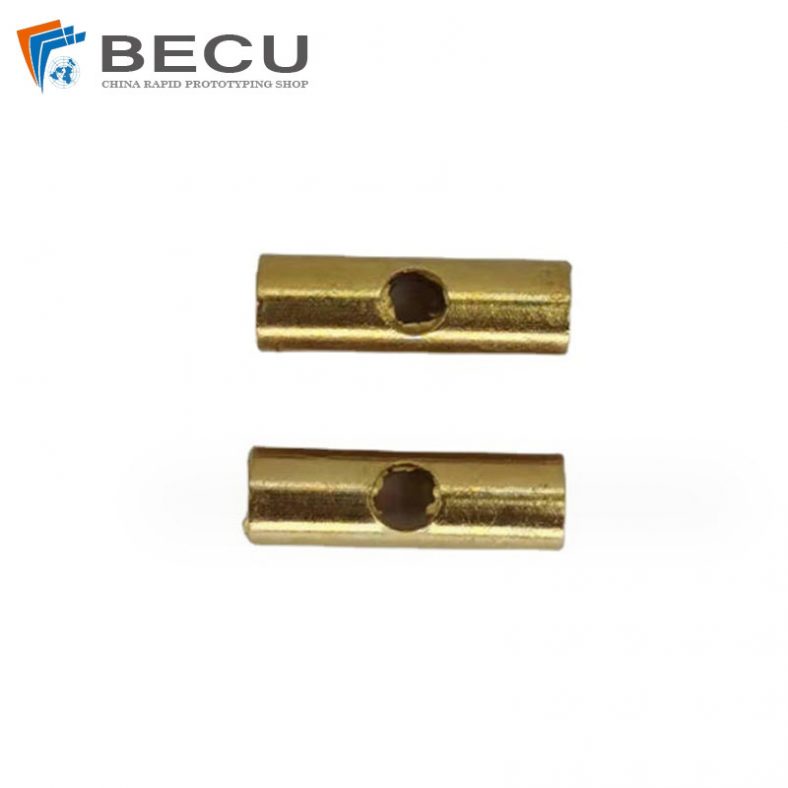
Zinc Die Casting PA10 Transformer Connector Terminal
-

Cast Precision Zinc Alloy Helmet Shell
-

Die-casting Custom Automotive Zinc Alloy Pump Housing
-
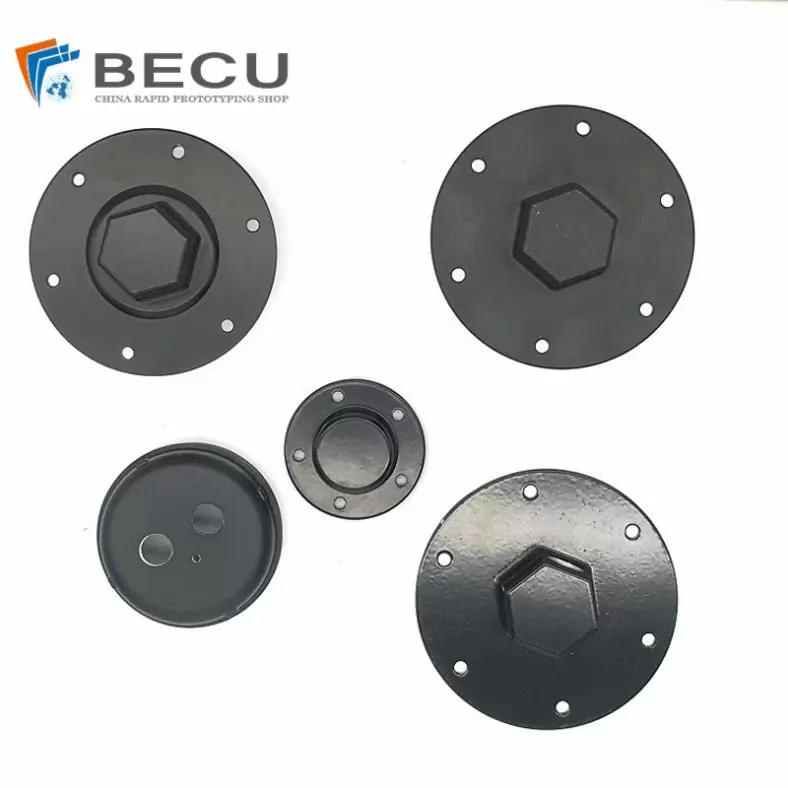
Manufacturers Who Cevelop And Customize Various Types Of Zinc Nut Die-casting Products
-

Die-casting Precision Metal Zinc Alloy Radiator
-
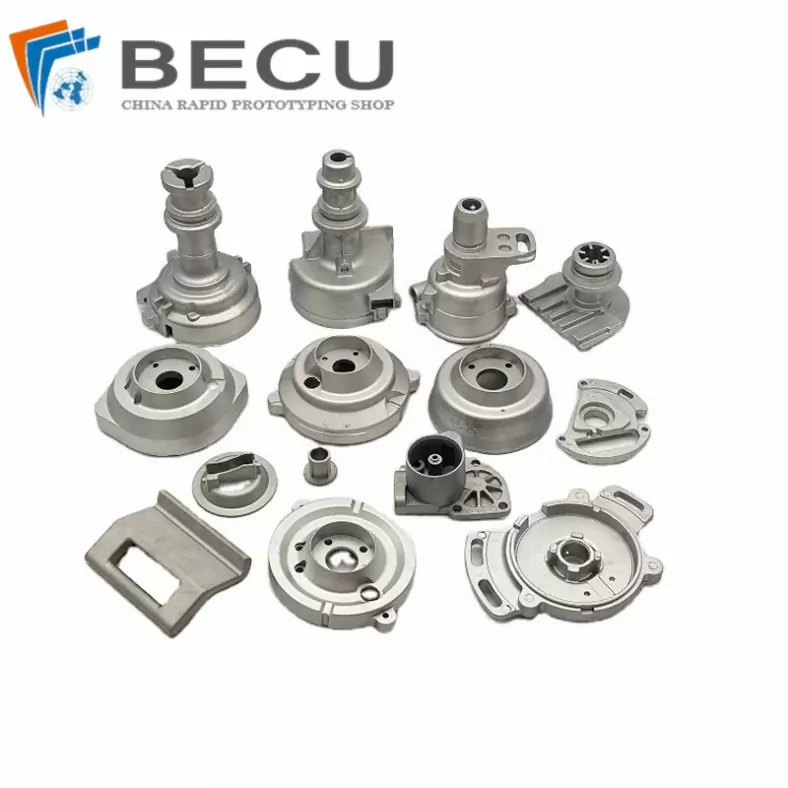
Zinc Alloy Auto Parts Die Casting
-

Die Casting Aluminum-Zinc Alloy Electronic Headset Parts
-
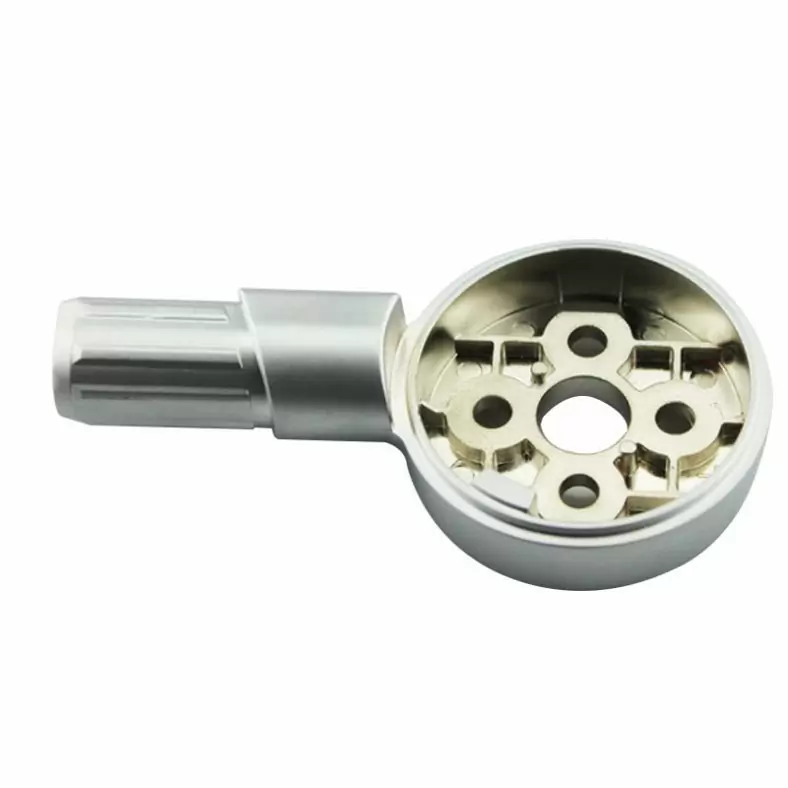
led Underground Light Plug-In By Zinc Die Casting
In Conclusion
In this comprehensive article, we explored the world of Zinc Machining. We discussed its definition, the physical and chemical properties of zinc, the advantages of zinc as a machining material, and the limitations associated with zinc machining. We then delved into the world of zinc alloys and their applications in various industries.
We also covered the different types of zinc machining processes, including turning, milling, drilling, die casting, extrusion, electrochemical machining, and powder metallurgy, providing insights into their applications and relevance. Additionally, we discussed the importance of selecting the right cutting tools, machine tools, lubricants, and coolants, while emphasizing safety measures to ensure the well-being of personnel and the environment.
The article also highlighted the significance of controlling machining parameters and techniques, including speed, feed, depth of cut, machining conditions, surface finish, tolerances, and cutting tool selection and geometry. These factors play a pivotal role in achieving precision and efficiency in zinc machining.
Importance of Zinc Machining in Modern Manufacturing
Zinc machining is of paramount importance in modern manufacturing for several reasons:
- Versatility: Zinc is a versatile material that can be tailored to meet specific requirements, making it suitable for a wide range of applications across various industries.
- Cost-Effectiveness: Zinc is abundant and cost-effective, making it an attractive choice for manufacturers looking to balance quality and affordability.
- Corrosion Resistance: Zinc offers excellent corrosion resistance, particularly when used in galvanized form, making it ideal for components exposed to harsh environmental conditions.
- Electrical Conductivity: Zinc’s good electrical conductivity is valuable for applications in the electronics and electrical industries.
- Machinability: Zinc is relatively easy to machine, which contributes to efficient manufacturing processes.
- Recyclability: Zinc is highly recyclable, aligning with the growing emphasis on sustainability and eco-friendly practices in manufacturing.
Final Thoughts on the Subject
Zinc machining is a vital pillar in the world of modern manufacturing. Its applications span across industries as diverse as automotive, electronics, construction, aerospace, medical devices, and consumer goods. The versatility of zinc, coupled with its array of favorable properties, allows manufacturers to craft precise components with a balance of strength, aesthetics, and cost-effectiveness.
As the manufacturing landscape continues to evolve, zinc machining remains a reliable and essential tool for producing intricate components and reliable products. The knowledge of zinc’s properties, the nuances of different machining processes, and the mastery of machining parameters all contribute to the successful and sustainable use of zinc in manufacturing.
In conclusion, zinc machining stands as a testament to the ingenuity and resourcefulness of the manufacturing industry, adapting and innovating to meet the ever-changing demands of our modern world. Its importance is undeniable, and its contributions to our daily lives, often hidden beneath the surface, are invaluable.
